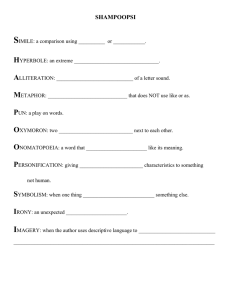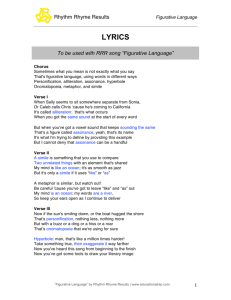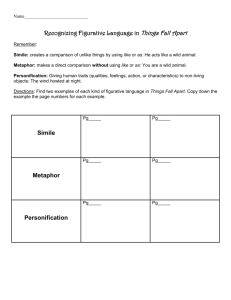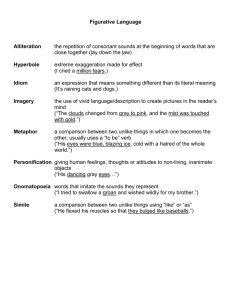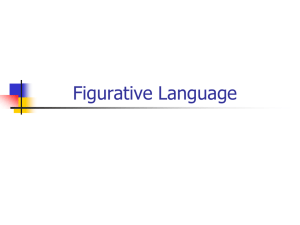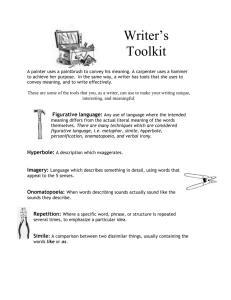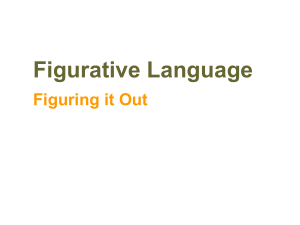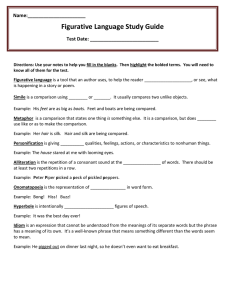Go Figure! Figurative Language Grades 6-8
advertisement
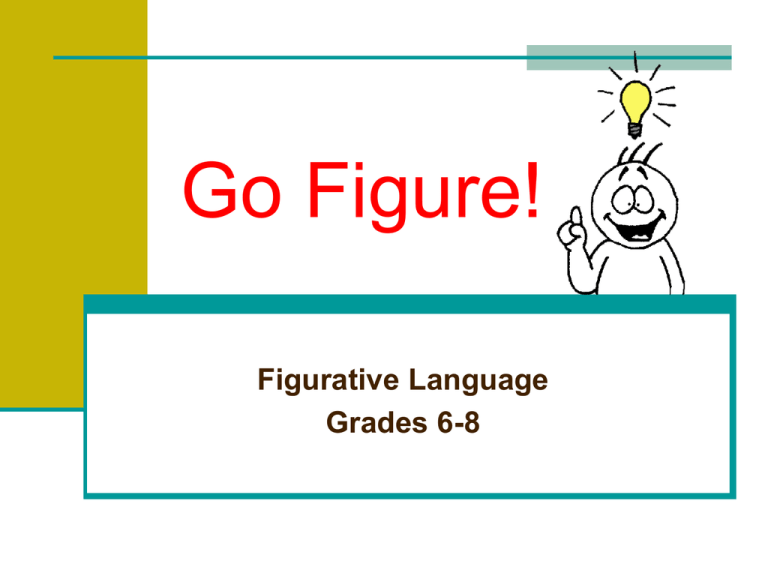
Go Figure! Figurative Language Grades 6-8 What is figurative language? Whenever you describe something by comparing it with something else, you are using figurative language. Types of Figurative Language Foreshadowing Simile Metaphor Alliteration Personification Onomatopoeia Hyperbole Foreshadowing Foreshadowing is a literary device in which a writer gives an advance hint of what is to come later in the story. Simile A figure of speech which involves a direct comparison between two unlike things, usually with the words like or as. Example: The muscles on his brawny arms are strong as iron bands. Metaphor A figure of speech which involves an implied comparison between two relatively unlike things using a form of be. The comparison is not announced by like or as. Example: The road was a ribbon wrapped through the dessert. Alliteration Repeated consonant sounds occurring at the beginning of words or within words. Example: She was wide-eyed and wondering while she waited for Walter to waken. Personification A figure of speech which gives the qualities of a person to an animal, an object, or an idea. Example: “The wind yells while blowing." The wind cannot yell. Only a living thing can yell. Onomatopoeia The use of words that mimic sounds. Example: The firecracker made a loud ka-boom! Hyperbole An exaggerated statement used to heighten effect. It is not used to mislead the reader, but to emphasize a point. Example: She’s said so a million times.
